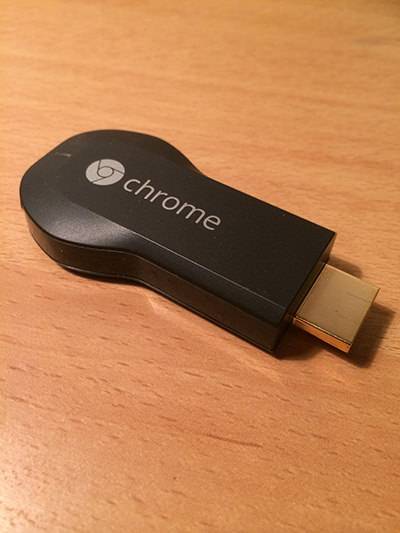
Using the Chromecast with friends is about to get better, thanks to this handy update: Google announced at its Google I/O developer conference that users will no longer have to join the same network, just to cast videos and music to Chromecast-connected TVs.
What Google didn’t announce, at least on stage, was how that was going to work. But the company’s engineers clued me in: Later this year, smartphones and tablets will be able to link to Chromecast over ultrasonic signals, which are undetectable to the naked human ear—not too different from the high-pitched signals bats use for echolocation.
The idea is to enhance the Chromecast experience when shared among several users in a room, Chromecast Product Manager Jagit Singh Chawla explained to me. He said that the engineers asked themselves how they could eliminate the need for friends to type in passwords, just to join the host’s Wi-Fi network. Bluetooth pairing often uses PIN codes, so the team “asked if there was a way to further reduce the friction of even entering the PIN.”
What they came up with was ultrasonic pairing, which works even when the phone is on a cellular connection. Here’s how: Chromecast users first enable the setting, so their streaming sticks can connect with the mobile gadgets present. Then friends use Netflix, YouTube or another Cast-enabled app to request Chromecast access, which prompts the TV dongle to emit distinct ultrasonic audio. The mobile receives the signal and pairs with the Chromecast.
The only data transmitted is very minimal—the equivalent of a PIN code—and the process is location-based, so the gadgets know they are in the same room with each other. “It won’t leave the room,” said Chawla, who also noted that the ultrasonic signal doesn’t bounce around or go through walls. “Think of it as a proximity technology.” That means your neighbor won’t be able to hijack your casting sessions. If the process fails for some reason, users can type in a code that pops up on screen.
GigaOm notes that ultrasonic networking was the brainchild of Google engineer Boris Smus, whose Web app project used it for messaging and pairing last year.
In related news, it appears that YouTube won’t be hogging TV Queue anymore. Other apps will get the ability to support this handy feature, which lets multiple people add videos to a single viewing queue. This and the ultrasonic pairing are both part of the same push to make Chromecast simpler and more fun as a vehicle for social TV viewing.
Updated to include more information and context from Google’s Chromecast engineers.










